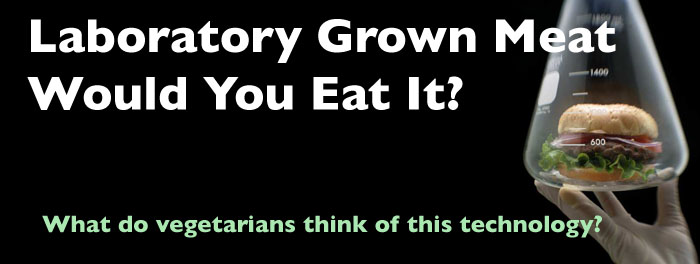
Fake meat! Would you eat it?
Under those extreme circumstances you probably would. But what about if this laboratory meat was available -- right now -- at your local grocery store. Would you even try it? Many future-looking companies -- and lots of environmentalists -- are hoping you will.
In 2008, PETA offered a $1 million prize to the first company that can bring lab-grown chicken meat to consumers by 2012. That's chicken meat that doesn't come from killing or hurting chickens. What?
Laboratory grown meat
There are, loosely, two approaches for production of in meat in a laboratory: you can grow loose muscle cells or structured muscle. The latter one being vastly more challenging than the former. Muscles consist of muscle fibers, long cells with multiple nuclei. It's usually structured muscles that you eat when you enjoy a piece of steak or a chicken breast or leg. The tissue is usually free from many veins or bone so it has a consistent texture and is easy to cook and eat.
[Above] A microscopic view of meat -- muscle cells. The dark spots are the nuclei of the cells. In and around the borders of the cells, the "precursor" cells lurk, waiting to be stimulated so they can mature into adult muscle fiber.
Muscle cells don't grow by themselves, they need to be stimulated. In an organism this stimulation usually comes from some sort of stress or trauma to the existing muscle cells. Then, special "precursor" cells fuse and change to muscle cells. These "precursor" cells are kind of like incomplete cells that surround muscle fibers, waiting to help when they are needed.
So this idea of growing muscle cells is quite different from, say, growing African violets or skin cells. You must first start with some muscle cells from a living animal like a pig, cow or chicken. Next you will need a perfusion system akin to a blood supply to deliver nutrients and oxygen close to the growing cells, as well as to remove the waste products. In addition, other cell types, such as adipocytes, need to be grown, and chemical messengers should provide clues to the growing tissue about the structure. Lastly, muscle tissue needs to be physically stretched or "exercised" to properly develop. It sounds near impossible.
Background
Winston Churchill said in the 1930s,
Jon F. Vein of the United States secured a patent (U.S. Patent 6,835,390 B1) for the production of tissue-engineered meat for human consumption, where muscle and fat cells would be grown in an integrated fashion to create food products such as beef, poultry and fish. The first peer-reviewed journal article published on the subject appeared in a 2005 issue of Tissue Engineering.
So the idea has been ripe for a long time. But actually producing something edible has been elusive.
Meat grown in laboratory is a world first
Researchers in the Netherlands created what was described as "soggy pork" and are now investigating ways to improve the muscle tissue in the hope that people will one day want to eat it. No one has yet tasted their produce, but it is believed the artificial meat could be on sale within five years.
Mark Post, professor of physiology at Eindhoven University, told The Sunday Times:
So far the scientists have not tasted it, but they believe the breakthrough could lead to sausages and other processed products being made from laboratory meat in as little as five years' time.
They initially extracted cells from the muscle of a live pig. Called myoblasts, these cells are programmed to grow into muscle and repair damage in animals. The cells were then incubated in a solution containing nutrients to encourage them to multiply indefinitely. This nutritious "broth" is derived from the blood products of animal fetuses (not so cool), although the intention is to come up with a synthetic solution.
From the description of their product, it sounds like these scientists have created "loose cells" and not the closely packed fibers of "a piece of meat" -- like a steak or pork chop. Obviously the complexity of that is still years in the future. What we are likely to see os more akin to hamburg or minced, ground meat.
Vegetarians very happy
Still, this announcement, on November 29th, 2009, was apparently enough to make vegetarian groups happy.
Comments from some hard-core vegans were, "This product will be good for the environment and will reduce animal suffering. If it feels and tastes like meat, people will buy it," and
"You could take the meat from one animal and create the volume of meat previously provided by a million animals." Animal rights group Peta said: "As far as we're concerned, if meat is no longer a piece of a dead animal there's no ethical objection."
If the product is successful, meat produced in a laboratory could reduce greenhouse gas emissions associated with real animals. Meat and dairy consumption is predicted to double by 2050 and methane from livestock is said to currently produce about 18 per cent of the world's greenhouse gases.
What about YOU? Would you eat it?
Comments: Hell I'd eat it. It's probably no worse than spam in a can or some ground parts of the animal that I'd rather not know about. At least it will be clean, free from e-coli bacteria and prions and hopefully not full of growth hormones and antibiotics like the stuff at the grocer/ butcher shop. I welcome the technology and hope it provides some competition to the ranchers and slaughterhouses who have been poisoning the public for decades. Garet H. I think I will wait until they make the hard, packed steaks. I detest mushy meat and like mine grilled and well done. Keep trying though. Oh yes, will it be more expensive than traditional meat? K.Brett As a vegan I don't eat meat because of the ethical issues with it. I have grown to dislike the smell of meat cooking and of watching people eating it. I don't think I could ever get used to it just because it was grown in a laboratory. The cells are still animal cells. And what about the "donor" who gives the initial cells for the culture. Aren't they being harmed? Chris I agree with Chris on this one. But there are also health issues. I believe a person can live more healthy with a vegetarian diet. There's low fat, low chloresterol, and other amino acids that make plants superior to meat. Eating "fake" meat is like smoking "fake cigarettes." It doesn't end the craving for something that's really no healthy for you. H. Skant
|
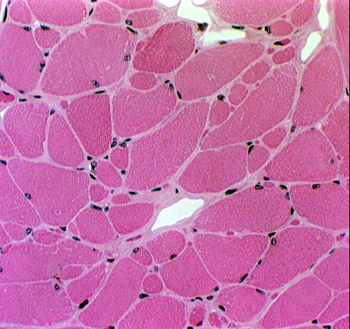
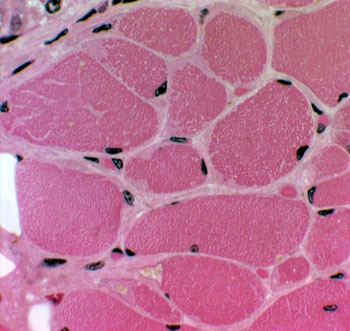
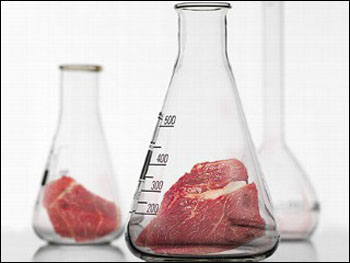 The development of in vitro meat originally arose out of experiments conducted by NASA, attempting to find improved forms of long-term food for astronauts in space. The technique was approved by the U.S. Food and Drug Administration (FDA) in 1995, and NASA has been conducting experiments since 2001, producing in vitro meat from turkey cells. In 2000 the Applied BioScience Research Consortium produced the first edible form of in vitro fish fillets that were grown from goldfish cells.
The development of in vitro meat originally arose out of experiments conducted by NASA, attempting to find improved forms of long-term food for astronauts in space. The technique was approved by the U.S. Food and Drug Administration (FDA) in 1995, and NASA has been conducting experiments since 2001, producing in vitro meat from turkey cells. In 2000 the Applied BioScience Research Consortium produced the first edible form of in vitro fish fillets that were grown from goldfish cells.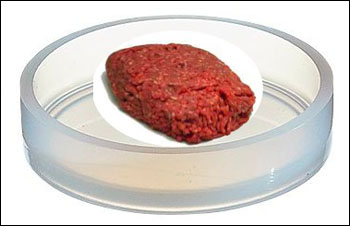 Experts in Holland used cells from a live pig to replicate growth in a petri dish. The advent of so-called "in-vitro" or cultured meat could reduce the billions of tons of greenhouse gases emitted each year by farm animals -- if people are willing to eat it.
Experts in Holland used cells from a live pig to replicate growth in a petri dish. The advent of so-called "in-vitro" or cultured meat could reduce the billions of tons of greenhouse gases emitted each year by farm animals -- if people are willing to eat it.